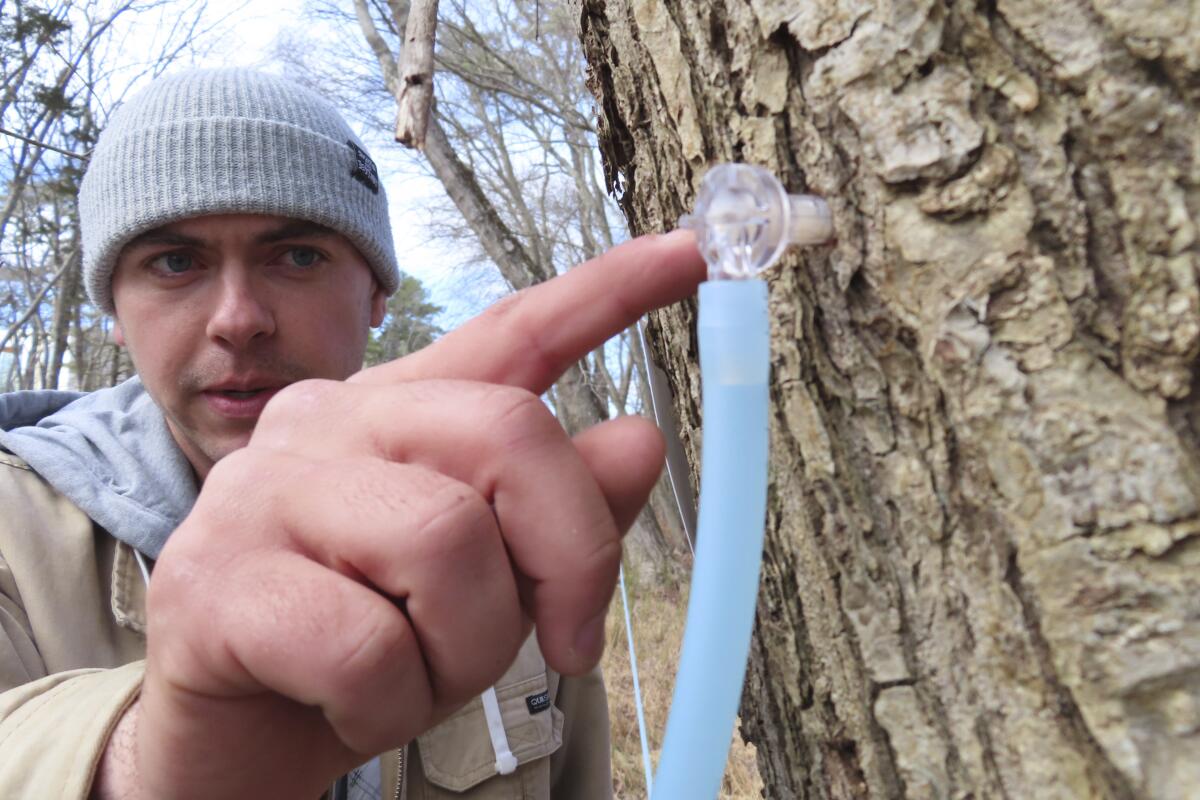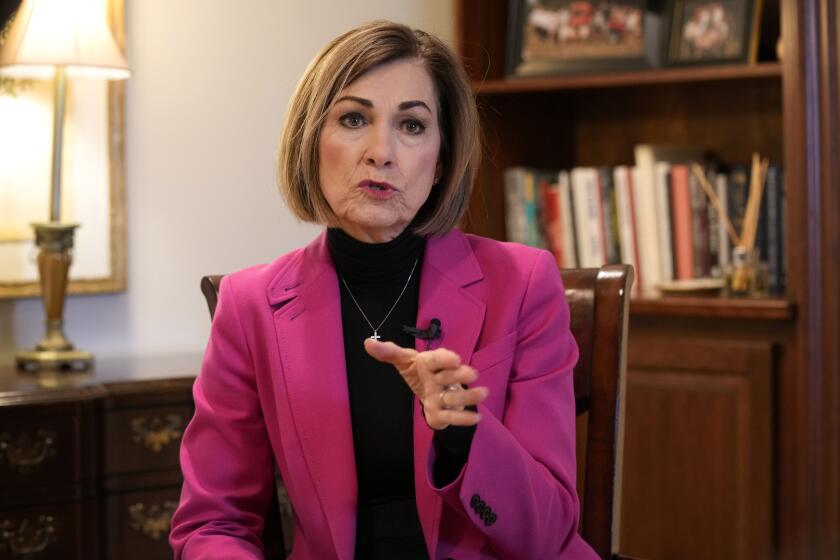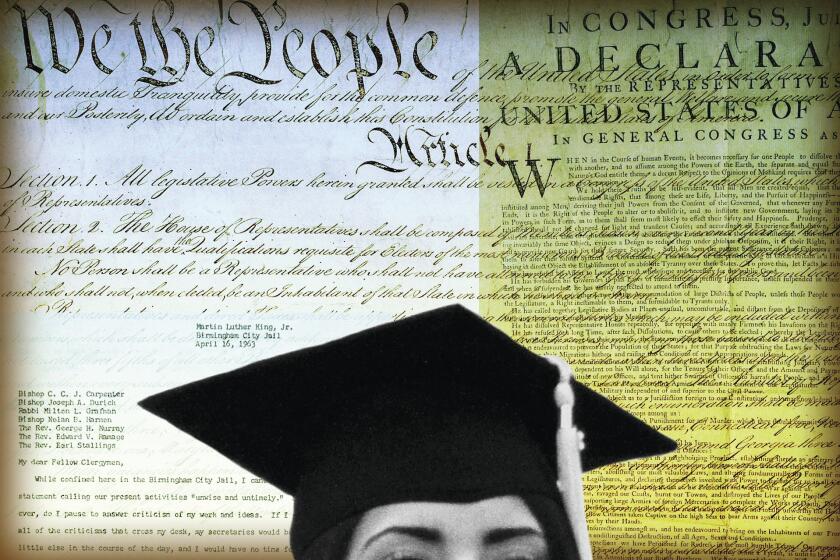Maple syrup from New Jersey: You got a problem with that?

GALLOWAY TOWNSHIP, N.J. — Welcome to New Jersey, known around the world for Tony Soprano, turnpike tolls, chemical plants, and ... maple syrup?
If a university in the southern part of the state has its way, the sticky sweet brown stuff you put on your pancakes might one day come from New Jersey.
It’s part of an effort to use a species of maple tree common to southern New Jersey that has only half as much sugar as the maples of Vermont, the nation’s maple syrup capital. The idea is to see if a viable syrup industry can be created in a part of the state better known for casinos and its vast forest of pine trees.
Backed by $1 million in grants from the U.S. Department of Agriculture, Stockton University is in its fourth year of producing syrup from the 300 acres of maples surrounding it.
“You should never tell a New Jerseyan, ‘It can’t be done,’ because we live for the challenge,” said Judith Vogel, a mathematics professor and director of the Stockton Maple Project. “There were a lot of obstacles to be overcome in bringing maple syrup production to South Jersey, but the work has been fun, and the results have been very sweet.”
The key to the project is utilizing some underdog trees that are not in the same class as the sugar maples typical of Vermont. Although there are some sugar maples in the northern part of New Jersey, Stockton is in the southern part of the state, about 16 miles northwest of Atlantic City, where red maples are more common.
This article was originally on a blog post platform and may be missing photos, graphics or links.
Although maple syrup has been made in New Jersey since the state was populated mainly by Native Americans, who shared their knowledge with settlers, no large-scale industry took hold.
Red maples like those in Stockton “are not highly sought-after because the sugar content is significantly lower, about 1% coming from a red maple versus about 2% for a sugar maple,” said Ryan Hegarty, assistant director of the Maple Project.
The general rule of thumb is that it takes about 40 gallons of sap from sugar maples of the Vermont variety to make one gallon of syrup, Hegarty said. For red maples, you need at least 60 gallons of sap because more water needs to be removed in the process of making syrup.
That is accomplished by using a high-pressure membrane to separate sugar and water molecules. That enables sap that came out of the tree at 1% sugar to enter the cooking process at 4%, an important efficiency if a new industry is to be established using suboptimal trees.
Charlize Katzenbach has been making maple syrup for 35 years at her Sweet Sourland Farms in Hopewell, N.J., about 80 miles northwest of Stockton. When she first started making syrup in the 1980s, New Jersey was a hard sell.
“No one would buy it,” said Katzenbach, who advised Stockton on setting up its program. “They’d say, ‘I get my syrup from Vermont; this can’t be any good at all.’”
But years of perseverance, and a growing desire for locally produced food, helped carve out a small niche for New Jersey maple syrup.
Iowa and Nebraska reject U.S. money for a summer children’s food program even though the federal government is picking up the tab.
In 2022, New Jersey produced 1,817 gallons of it, worth $88,000, according to the state Agriculture Department. By contrast, Vermont produces half of the nearly 6 million gallons of maple syrup sold each year in the United States, worth about $105 million, according to the U.S. Department of Agriculture.
Allison Hope, executive director of the Vermont Maple Sugar Makers Assn., said those federal figures are probably an underestimate, with the real total somewhat higher.
Another challenge is the climate in southern New Jersey, which tends to be warmer than that of New England. That affects when and how the sap flows.
“You need below-freezing nights, then you need above-freezing daytime temperatures” to ensure a good flow of sap, Hegarty said.
At Stockton, that usually begins around the second week of January, when harvesters use cordless drills to bore tiny holes into the trees, into which they place metal taps attached to plastic hoses to drain the sap. A vacuum-powered system helps the sap along and carries the liquid to collection buckets at twice the rate of just letting it drip out without assistance.
The trees are not harmed by the tapping. Hegarty likens the process to a human giving blood, which is replenished and the entry wound quickly heals.
The deep Wisconsin woods surrounding Squirrel Lake are silent on this morning.
Coming straight out of the tree, the sap tastes like water. Only after it is cooked in a wood-fired evaporator does the sugar content soar. Then the color turns brown, in the same way that a white marshmallow turns brown near the heat of a campfire.
So far this year, Stockton has collected over 4,000 gallons of sap from 400 trees, and expects to produce 55 gallons of syrup, “which would be a great year for us down here in South Jersey,” Hegarty said.
Stockton’s syrup is darker and richer than commercially sold syrup, and has a slightly smoky taste from the cooking process. The university is already using the syrup in its food service program to create new flavors of salad dressing and barbecue sauce, and also sells it at farmers markets.
In the project’s next round of funding, Stockton will seek partnerships with the food industry and regional schools to introduce its syrup more widely.
“Our syrup in New Jersey is as good as anybody’s anywhere in the world,” Katzenbach said. “It’s good, it’s local and it tastes great.”
Wayne Parry writes for the Associated Press.
More to Read
Sign up for Essential California
The most important California stories and recommendations in your inbox every morning.
You may occasionally receive promotional content from the Los Angeles Times.










